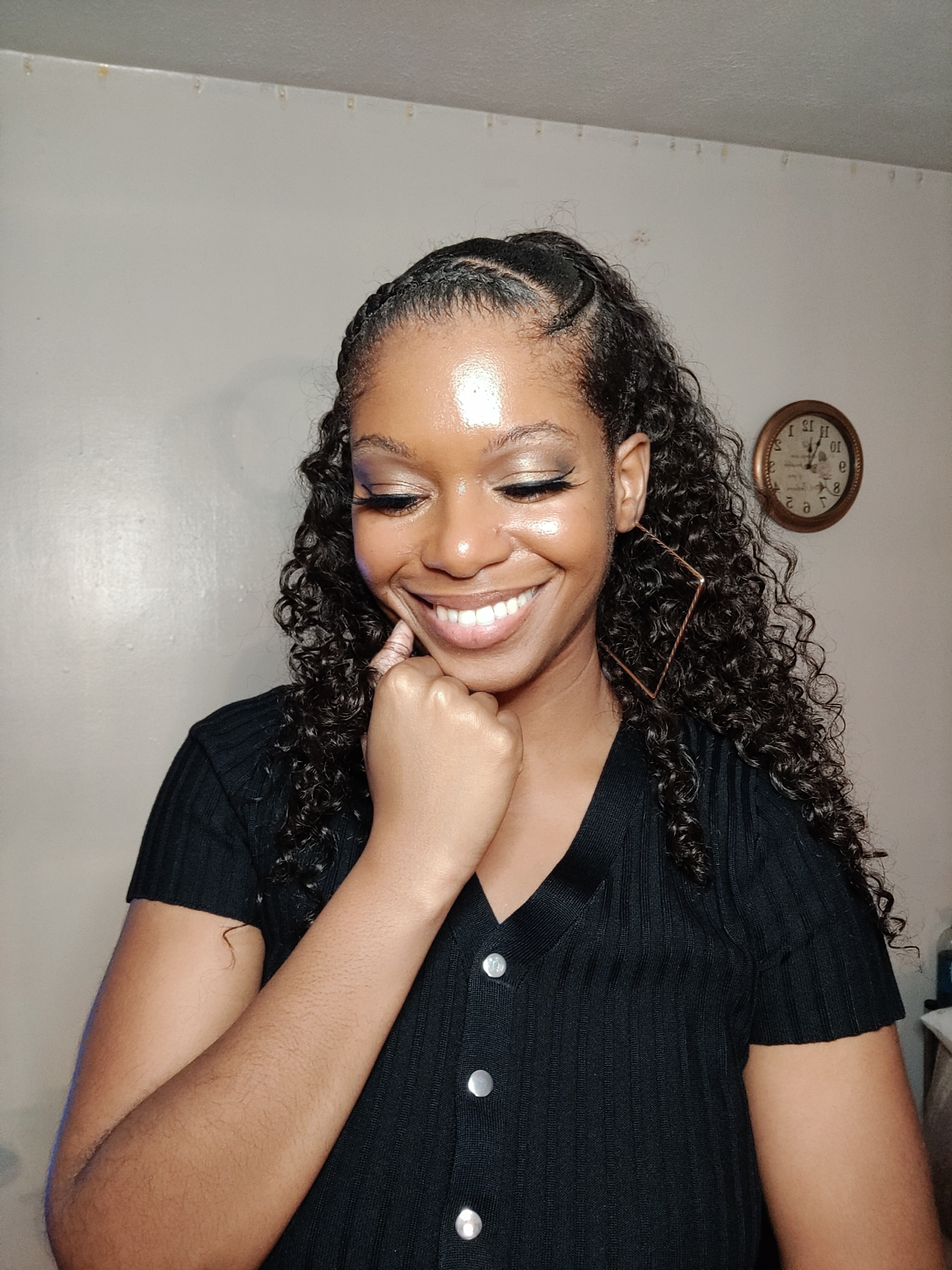Show, Don’t Tell Examples: A Complete Guide for Effective Writing

Today, I am showing you what show, don’t tell examples look like. The concept of “show, don’t tell” is important when writing a piece of fiction or non-fiction like a memoir if you want to truly immerse readers in your story.
When I provide show, don’t tell examples in my writing, I aim to enhance reader engagement by allowing them to see the story through their mind’s eye rather than simply being words on a page.
So, sit back as I give you various show, don’t tell examples and principles I use for writing that will allow your readers to submerge themselves in both the imagination and reality of your making.
Understanding the Concept
To start, “show, don’t tell” is a principle I often use in both fiction and non-fiction writing as a way to give clear visualizations to my readers.
While “telling” does have its use, such as when a character needs to state a fact, “showing” is particularly vital to include for limiting the amount of vagueness and cliches my readers experience.
Moreover, “showing” adds depth to my writing because even if readers can fully picture the story in their head, they have no clue of what details I may be omitting by accident.
Benefits of “Show, Don’t Tell Examples”
In popular genres, such as fantasy, I find show, don’t tell examples in a story is exceptionally important for the sake of world-building in general, not just for sensory submersion.
For example, I use “show, don’t tell” to create emotional connections by putting my reader directly into the shoes of my character’s/narrator’s point of view.
Enhanced descriptive imagery is another aspect of this principle that gives my readers fluid expressions of the scene. It can include something as simple as using metaphors my audience can easily interpret or relate to.
Examples of Telling
In comparison, if I use too much “telling,” my readers’ intrigue decreases and makes my story predictable. For example, if my narrator says, “I walked to the park in the hot daytime.”
Anyone could have used this line. It’s no secret that the sun is hot, so if I use these kinds of descriptions in my story, it is likely to stand out negatively.
Instead, I might use this for “showing”: “I walked to the park as the sun reigned above and the heat scorched my skin.”
Let readers feel your scenes, don’t just explain them.
Mastering the Art of Showing
Saying the blanket I pulled over my head was “comfy” is not as immersive as saying it “wrapped my head and face in its cotton fibers.”
To create vivid visual imagery, I find it is key to utilize the senses of both the setting and my character’s/narrator’s actions.
Another important aspect I keep in mind is letting my dialogue do the “showing,” even in the absence of a narrator’s tag. I emphasize tone and behavior through word choices and syntax, rather than through imagery alone.
Painting with Words: Descriptive Scenes

For “show, don’t tell,” I keep multiple aspects in mind when setting the scene for my story. This includes where my story is located, what time of day/year it is, and what events are happening at the moment around my narrator or characters.
The mood I want to create in my scenery descriptions is very much impacted by how I include certain colors, landscapes, and objects that provide subtext through symbolism.
One aspect I am careful of in this regard is not using too many flowery descriptions for an extended portion of my story. Your readers may want your lovely nuanced and artistic descriptions, yes, but it’s best not to overwhelm them with pointless elaboration.
Conveying Emotions Effectively
When depicting the emotions of my narrators/characters, I aim to “show” what they feel instead of dumbing it down for my readers. This adds to the immersion of one’s writing.
Body language and gestures are powerful tools humans use in the absence of words. Scrunching your face when you are angry, or avoiding eye contact when you are ashamed are just some of the ways our actions depict emotion through “showing.”
An important aspect of this I find is limiting the use of adverbs. This means avoiding describing emotional actions with words such as “happily” or “charismatically.”
Reader immersion occurs when they can see how someone acts happy or charismatic, so show them.
Developing Dynamic Characters

Whether it’s an eye roll, the tapping of a foot, or even the way one sits in a chair, all these things paint the picture of what impression my characters give my readers.
Something I like to do when writing character behaviors/traits is to pretend that they are mute. If someone could not speak, how would they communicate? It is most likely through specific gestures, expressions, and body language.
When I write character growth, “show, don’t tell” is also useful because a character’s inner development is displayed through their actions.
Dialogue as a Tool for Showing
Moreover, I find it is important not to make dialogue too little of a player in my story; otherwise, my readers have no room to imagine the scenes for themselves through its subtext.
Dialogue allows dynamics between people to be revealed. Their closeness is shown through the context of what they do and don’t say.
Personality traits, such as someone being sociable or reserved, are shown through the method of their engagement, not just how much they verbally converse.
Showcasing Conflict and Tension
Similarly, throughout the plot of my stories, I build tension by what my characters directly engage in and witness from the sidelines.
If my character/narrator has disputes with another, making it too obvious could ruin the suspense of my story. I may do this by including subtextual dialogue, or even the mannerisms my character portrays when engaging with their opponent.
The pacing of my story is also crucial to keeping a reader engaged. I may do this by slowing down the movements of your characters or quickening them to suit the internal emotions they are feeling at each moment.
Setting the Mood

When observing the image above, what do you feel? Maybe it’s the harshness of the rocky stones and cliff, or maybe it’s the somber coldness of the cloudy blue sky.
When setting the tone of my story, I aim to include sensory language that depicts anything related to sight, sound, smell, touch, and taste.
Additionally, I like to keep the emotional grounding points of my story in mind with these descriptions.
Pay close attention to specific textures, smells, sounds, etc., that vary in relatability to what your reader can realistically comprehend.
Show, Don’t Tell Examples in Different Genres
Fiction is not the only type of writing that benefits from “show, don’t tell.” Any genre or style of writing can garner reader interest, regardless of whether it’s real or imaginary.
Each genre is different regarding how I should “show” a story to my readers. In fiction, for instance, “showing” provides my readers with a dreamlike immersion for a made-up story. In comparison, non-fiction uses “showing” to connect my readers with real-world experiences and people who exist but whom they may have not yet encountered.
An example of “showing” in horror fiction could be describing the texture of blood splashing across one’s face. For fantasy, it may be describing how loud the roars of a dragon are. Whereas romance may entail descriptions of a love interest’s physical appearance or kind gestures they make to another.
Editing for “Show, Don’t Tell”
One way I identify “telling” is by paying close attention to my vague use of adverbs. This also includes spotting one-dimensional statements made by my characters/narrators which add no subtext to a scene.
A weak passage, for instance, may be riddled with adverbs or statements like, “I didn’t like the food.” Instead, I may describe the expressions/gestures made by said character, or the five senses experienced when eating said meal.
In the writing workshops I’ve done, grounding my peers in a clear setting took practice, and still does. Don’t be afraid to seek feedback on specific aspects of your story like imagery and setting clarity. You’ll be surprised to discover how much you have yet to show your audience!
Exercises to Improve Showing Skills
One way I like to strengthen my “showing” skills is by jotting down any observations I make about something. Something I deliberately practice when walking, sitting, talking, etc., is to look up, down, and all around!
So, focus on the details in your environment that you don’t always acknowledge or put value in.
A book I find that does “showing” well is The Strange Case of Dr. Jekyll and Mr. Hyde. The author uses imagery to establish mood and symbolism that connect the reader to the story’s broader themes and experiences of its characters.
This is seen in the description, “…The glow of hot autumn afternoons on hillside vineyards, was ready to be set free and to disperse the fogs of London” (Stevenson 32).
Common Pitfalls to Avoid
If I have extraneous details in my story, it can bog down its pacing, as well as my readers’ ability to comprehend the text. Make sure most, if not every, detail included in your story serves a purpose.
Likewise, “showing” is not always necessary in one’s writing either. If certain details/descriptions do not drastically change the trajectory of my story’s purpose, I omit the fluff.
Show, Don’t Tell in Non-Fiction
The notion of “clarity” is key in the realm of writing articles and essays. Both fiction and non-fiction works seek to inform readers, even if they vary in their topics.
To enhance my readers’ clarity and engagement in non-fiction, I assume they have no clue about the setting or subject matter. This helps me write descriptions that leave little to nothing of importance out of the story.
Using Metaphors and Similes
Figurative language is another technique I often use for “showing.” Comparing certain concepts, entities, or scenarios to each other not only gives clarity to my readers but subtext for them to dissect.
However, I think it’s important to keep my story’s purpose in mind when using metaphors and similes. Using “she danced like raindrops” in my story about deadly hurricanes could be insensitive to readers due to this simile’s lighthearted tone.
Avoiding cliches is a big one I keep in mind. A quick way to bore a reader is to use comparative language that has been told a thousand times before.
Be creative and make the language your own. Instead of “light as a feather,” I try phrases like, “light as a dried-up sponge,” or whatever suits my stories’ tones/themes best.
Show, Don’t Tell Examples in Action Sequences

If a character is in a fistfight, for instance, how quick are their movements? Which direction are they dodging in? What do the blows feel like?
I try to fully encapsulate thrilling sequences with as much imagery and realistic movements as possible to keep my readers engaged.
However, I also remember not to sideline character development for a quick buzz of action. Character depth is part of a lot of readers’ entertainment, not just because of the story’s flashy choreography.
Final Thoughts
Overall, “show, don’t tell” is important to apply to your writing because a reader’s natural senses are the strongest tools you have to captivate them. An audience’s comprehension of your story largely revolves around the “mind castle” through which you emotionally transpose them.
This is done through your writing’s inclusion of a setting’s imagery, character subtext (dialogue and behavior), and establishing mood and dynamism through your creative use of language.
Regardless of whether I write for romance, thrillers, fantasy, fiction, non-fiction, etc., I am not alone in my journey of crafting an immersive world for my readers, and neither are you!
Plenty of writers have struggled with “show, don’t tell,” but your weaknesses in utilizing it effectively are not your future promise.
“Show, don’t tell” was one of the things I struggled most with when I first started writing, as it was hard for me to translate the imagery in my mind to words on a page. So, don’t think you are doomed to an endless uphill battle.
With continued practice, feedback from others, and curiosity toward surpassing your writing’s potential shortcomings, I know that you and your future readers will gladly reap the fruit of your hard-earned growth.
Keep striving, writers!
Until next time.
Are you an aspiring writer who is terrified to Publish? Or do you have a book inside of you but don’t know where to begin the publishing process? Book a Call, HERE.
Frequently Asked Questions
If you have a narrator describing a fearful encounter in the ocean, you might say, “I had gone into the grayish blue waves at waist deep, but a slick, thick mass brushed against my leg as I reached the underwater bunker.”
The description mentioned in the previous answer clarifies why the narrator is afraid. In the above answer, the narrator cannot see what is lurking beneath them. Even if your reader has never encountered a shark, this scene conveys the common “fear of the unknown” many people have, making it quite effective.
A way to exhibit anger in a story could be, “His jaw and fingers clenched as his nails dug deeper into the crevices of his palms.” Next time you or someone else gets angry, take notes. What do you physically see in that moment?
Related Articles
Author’s Purpose: Key Insights Into Writing Intentions
Plugin designed by RofiTech







